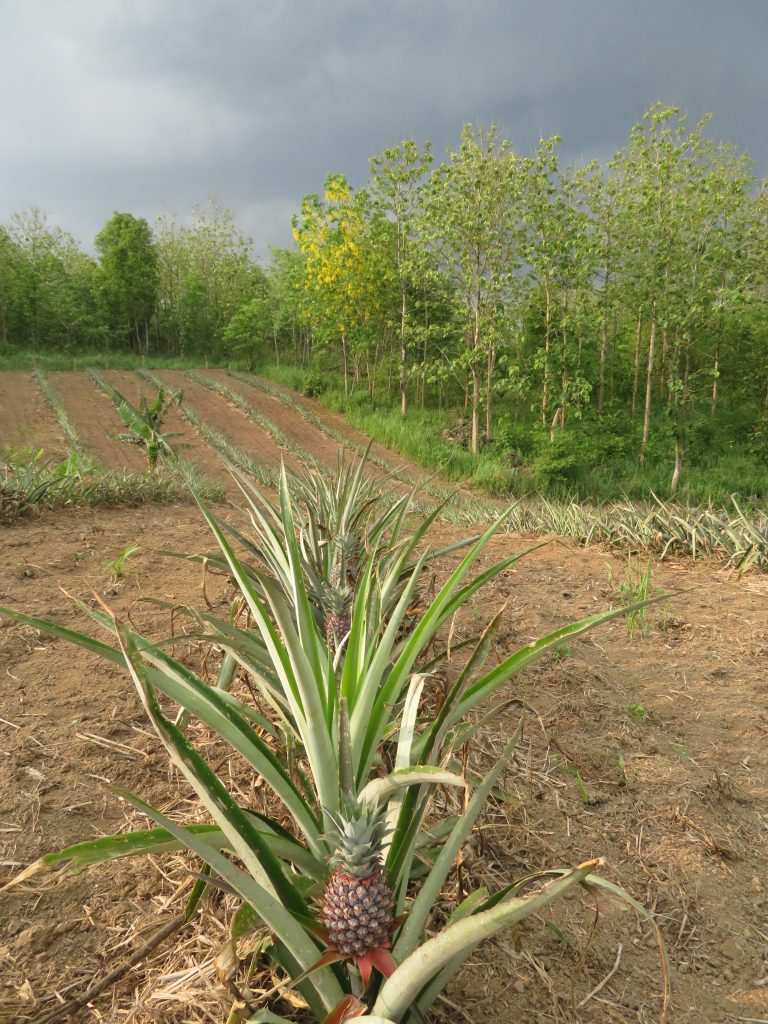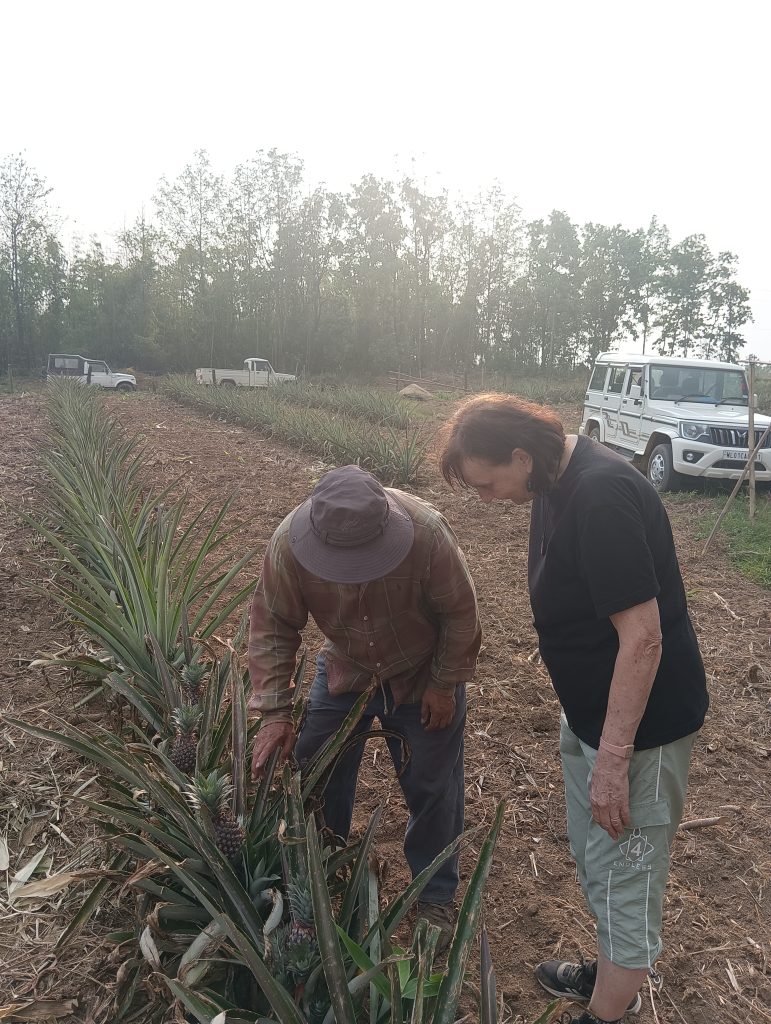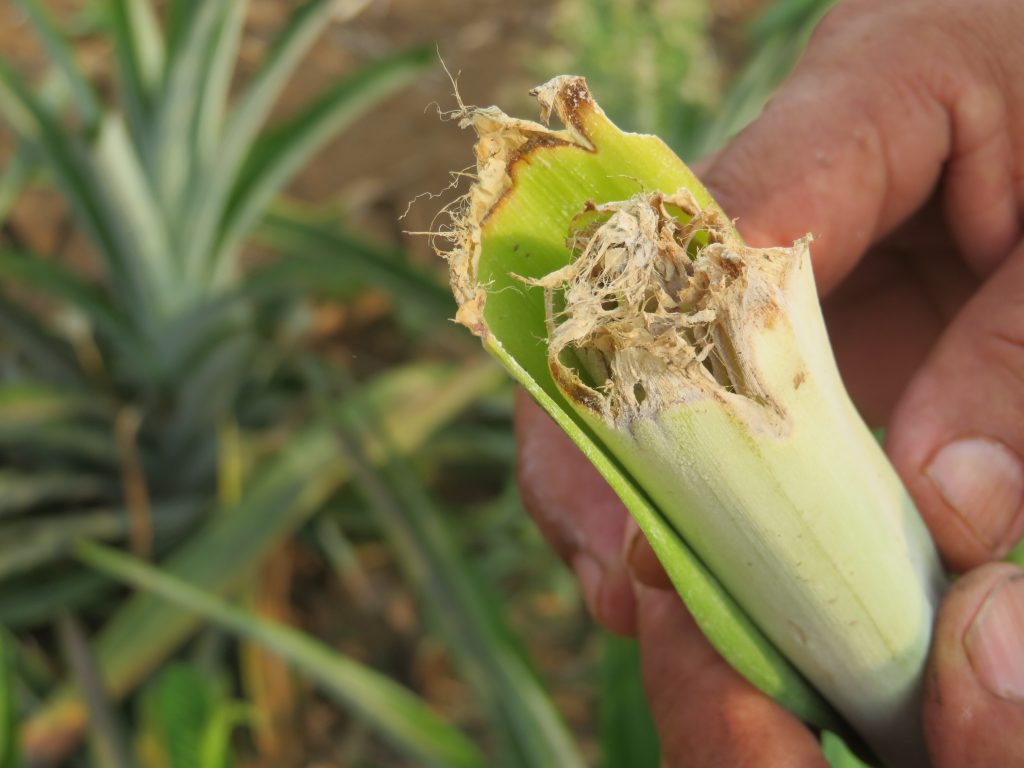About Rüzaphema
Rüzaphema is in the Chümoukedima District of Nagaland. The village has a population of around 2400 individuals, and the entire land holding is about 150 square kilometers.
The settlement is approximately 200 years old. Oral history says that it was founded by four people; three were Angami—one from Khonoma village, one from Sechuma village, and the other from Mezoma village. Each of the three Angami founders is represented by a khel¹. The fourth founder was a Kachari. The Kacharis were integrated into one of the Angami khels, rather than forming one on their own. It is, therefore, an Angami village. An interesting historical fact is that the British discovered a wild tea plant growing in the village. However, we don’t know if this was the first tea plant discovered outside of China. The narrative goes that it was taken from Rüzaphema and cultivated in Assam, where the geography was better for large-scale cultivation.
Rüzaphema village, nestled in the verdant hills of Nagaland, stands as a testament to the region’s rich agricultural heritage, particularly its vibrant pineapple cultivation. Located in the northeastern part of India, the picturesque village embodies the essence of rural life, where traditional farming practices harmoniously blend with the natural landscape.
The Secretary to the Village Council informed us that they are currently facing three major environmental problems: water shortage, moisture stress, and location in a rain shadow. The villagers explained that Rüzaphema lies in the rain shadow of Mount Pauna, situated to the southeast. This geographical phenomenon significantly affects their weather patterns. We observed the rain shadow effect firsthand: while heavy rain fell on Mount Pauna and the adjacent hills, hardly a drop reached Rüzaphema. This discrepancy exacerbates the water scarcity and moisture stress in the village, presenting significant challenges for agriculture and daily life.
Our visit to this attractive village gave us an insight into the lives of the zealous and skilled local farmers behind the production of pineapple. The warm weather and excellent soil make it an ideal growing area for pineapple, which is a major source of income for the farmers in the area. Before pineapple farming, they used to practice jhum cultivation, but they turned to pineapple growing because of climate issues and the limited availability of rainfall and water supply. Pineapple is a drought-resistant crop and provides a reasonable income for the local farmers. All the production is organic, and the pineapples from this village are said to have a superior taste. Pineapple farming has been practised for home consumption for many years. Commercial cultivation began around 2016 with a few farmers. Now there could be roughly 200 farmers. In this region, it is not just an agricultural activity but a way of life.
Pineapple Cultivation
On our visit, we met farmers who told us their stories and shared their knowledge. As we walked through the pineapple fields, we could see the special care these plants receive. The farmers provided information on land preparation, planting of the suckers, and organic pest and disease management. Looking at the vast expanse of land dedicated to monoculture pineapple cultivation, we were concerned about soil fertility.

We asked the farmers how they managed to maintain soil fertility and replenish nutrients. They explained that they use paddy straw for mulching, which is highly effective. Additionally, they practice intercropping. We also observed some farmers planting rice paddy between the rows of pineapple.
Our guide, Roko Savino, mentioned that he plans to intercrop with soybeans, which would help fertilise the soil. The government is also providing soybean seeds to the villages to support this practice. Roko is an entrepreneur from Rüzaphema Village, who is known for his waste-management product “Green Bran”. We visited the fields when most of them were past the sowing stage. The farmers also told us that pineapples generate more income than any jhum crops. They were unsure about the exact variety they were cultivating, but the locals typically refer to it as “Hanuman Head” because they believe it resembles the head of the Indian god Hanuman. At this busy time, the farmers were occupied with weeding and clearing the extra suckers. It appeared that many farmers were sleeping in their field huts for weeks during this hectic period.

Planting process
The pineapples are planted in double rows with a spacing of about 6 inches between the plants, and an 8-foot gap separates each double row. The land between the double rows is meticulously weeded. Some plantations are impressively neat, with no weeds in sight and beautifully straight rows. We learned that the farmers use a rope to ensure the rows remain straight. Some farmers clear the land entirely by hand.

Harvesting
When asked about the harvesting stages, the farmers explained that there are two main periods for harvesting pineapples. The first harvesting stage occurs during the summer, typically between June and August, depending on the specific planting time. This period is crucial, as the warm weather helps the fruits to ripen perfectly. The second harvesting stage takes place from December to January, allowing the farmers to take advantage of the cooler months. This dual harvesting schedule ensures that the farmers can maintain a steady supply of pineapples throughout the year, optimizing their yield and income.
Challenges
Despite their dedication and expertise, pineapple farmers in Rüzaphema Village face several significant challenges.
- Pests: The farmers face a significant threat from wild boar, which don’t eat the fruit but dig up leaves to consume the succulent white base. This can lead to severe damage, potentially costing a farmer an entire year’s work. If the damage occurs in February or early in the year, plants might recover but often won’t bear fruit that year. Farmers are trying various methods to protect their crops, such as hanging white bags on posts, using wire or bamboo fencing. Occasionally, they shoot the boar. Despite these efforts, finding an effective solution to the wild boar problem remains a challenge.
- Hailstorm: We observed several fields where the plants had suffered significant damage due to a hailstorm that struck in April.
- Suckers: The farmers explained that after the harvest, each plant produces about 8–10 suckers. These suckers need to be removed; otherwise, they will establish new plants and draw nutrients away from the parent plant. According to the farmers, removing the suckers is the most challenging aspect of pineapple cultivation.

Shortage of Water and Corrective Measures
For the past few years, the community has faced water scarcity due to climate change. The locals now have to travel to Punglwa village, 61 kilometers away, taking around 2 hours, to collect drinking water. Attempts to dig wells were unsuccessful because water was not found 300–400 feet below ground.
After multiple attempts to secure projects to improve the water supply, the village has successfully obtained a 5-year project from the Japan International Cooperation Agency. This project involves constructing a dam at the confluence of two rivers, one from Chumukedima district and the other from Peren district. We asked Roko the names of the rivers being dammed. He explained that the one originating from the village side is called Kepekhra Rü, which means “upward-going river.” The name of the other river from the Zeliang community side is unknown.
The dam may reach a height of up to 50 feet, with an expected length of 1.5 kilometers and a width ranging from 500 feet at maximum to 40 feet at minimum. The dam is anticipated to hold approximately 280 million liters of water. Similar to the Doyang reservoir dam in Wokha District, it will be constructed using earth and boulders.
Conclusion
Rüzaphema is a place of resilience and adaptability and a gem with a long history. Despite living in a place prone to water scarcity and moisture stress, the villagers have been able to shift from jhum production to sustainable organic pineapple farming. The shift has enhanced soil fertility, and the farmers enjoy agricultural success due to their innovative methods and dedication. Moreover, they have obtained a water supply project through the Japan International Cooperation Agency, showing their determination to overcome their difficulties. As part of this initiative, which will help the area enjoy water security, the future of Rüzaphema looks more promising. The synthesis of traditional knowledge and modern techniques in the village provides a reminder of how people can live within environmental limitations, and Rüzaphema’s example should inspire others.
[1] A khel is a Naga institution that brings together several clans within the village community.
Discovering Pineapple Paradise: Rüzaphema Village
By Kevide Lcho
Myanmar IDRC Canada, Research Fellow.


